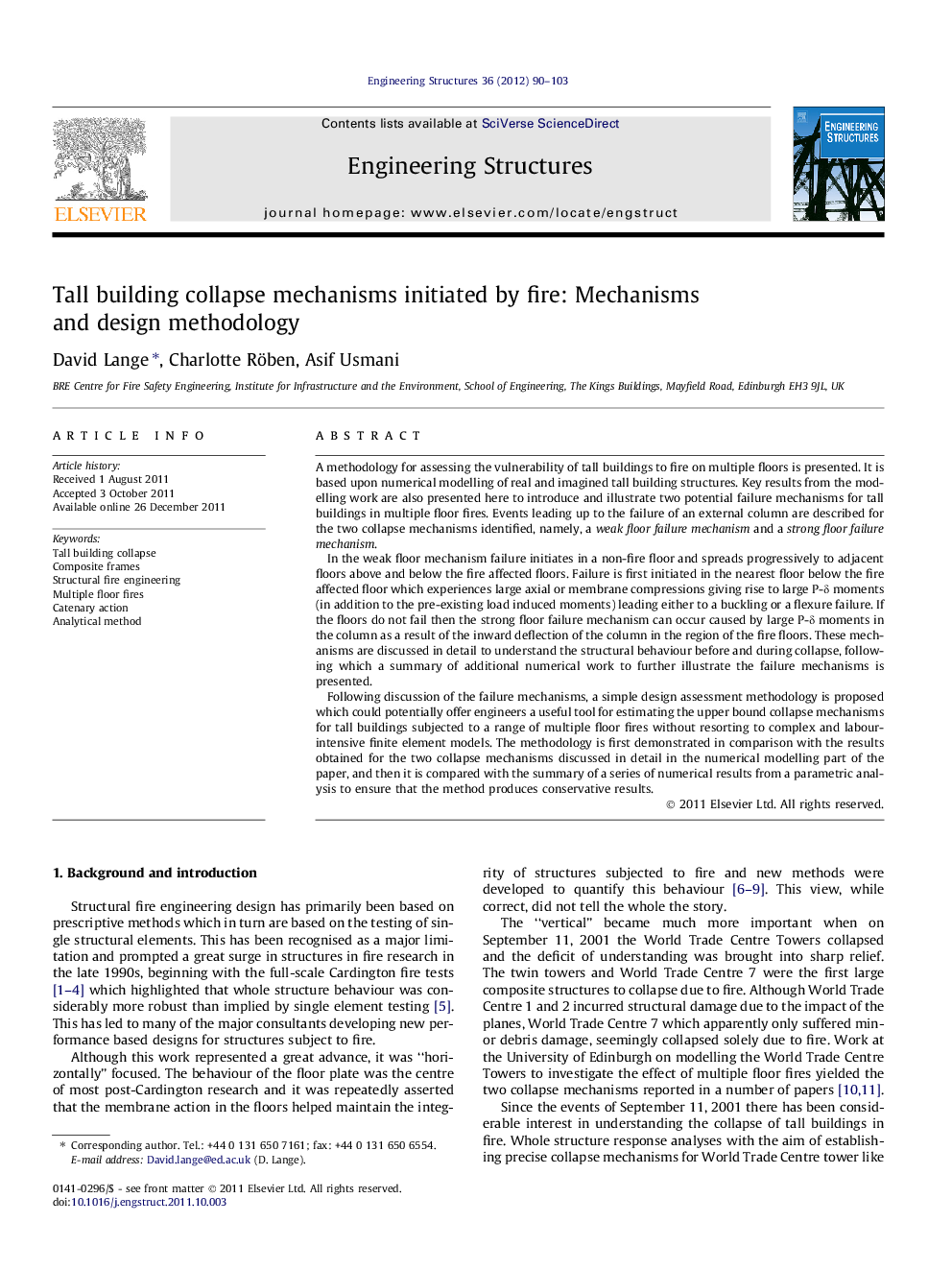| کد مقاله | کد نشریه | سال انتشار | مقاله انگلیسی | نسخه تمام متن |
|---|---|---|---|---|
| 267849 | 504417 | 2012 | 14 صفحه PDF | دانلود رایگان |

A methodology for assessing the vulnerability of tall buildings to fire on multiple floors is presented. It is based upon numerical modelling of real and imagined tall building structures. Key results from the modelling work are also presented here to introduce and illustrate two potential failure mechanisms for tall buildings in multiple floor fires. Events leading up to the failure of an external column are described for the two collapse mechanisms identified, namely, a weak floor failure mechanism and a strong floor failure mechanism.In the weak floor mechanism failure initiates in a non-fire floor and spreads progressively to adjacent floors above and below the fire affected floors. Failure is first initiated in the nearest floor below the fire affected floor which experiences large axial or membrane compressions giving rise to large P-δ moments (in addition to the pre-existing load induced moments) leading either to a buckling or a flexure failure. If the floors do not fail then the strong floor failure mechanism can occur caused by large P-δ moments in the column as a result of the inward deflection of the column in the region of the fire floors. These mechanisms are discussed in detail to understand the structural behaviour before and during collapse, following which a summary of additional numerical work to further illustrate the failure mechanisms is presented.Following discussion of the failure mechanisms, a simple design assessment methodology is proposed which could potentially offer engineers a useful tool for estimating the upper bound collapse mechanisms for tall buildings subjected to a range of multiple floor fires without resorting to complex and labour-intensive finite element models. The methodology is first demonstrated in comparison with the results obtained for the two collapse mechanisms discussed in detail in the numerical modelling part of the paper, and then it is compared with the summary of a series of numerical results from a parametric analysis to ensure that the method produces conservative results.
► Results of numerical modelling of tall buildings exposed to multiple floor fires are presented.
► Results of numerical modelling of tall buildings exposed to multiple floor fires are presented.
► A simple analytical method for checking for either of the two collapse mechanisms is presented.
► The method is verified against numerical models and further examples are given of the method.
Journal: Engineering Structures - Volume 36, March 2012, Pages 90–103